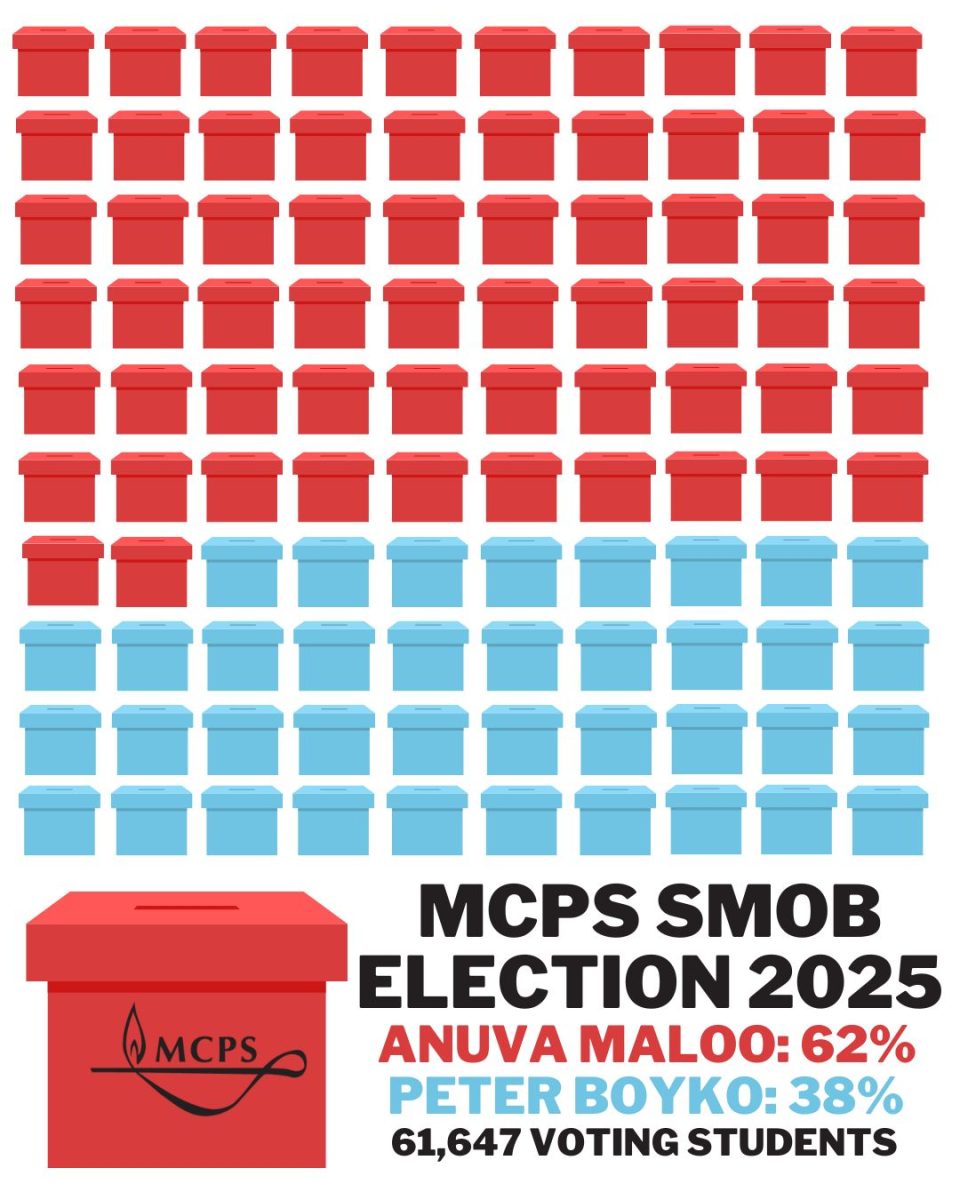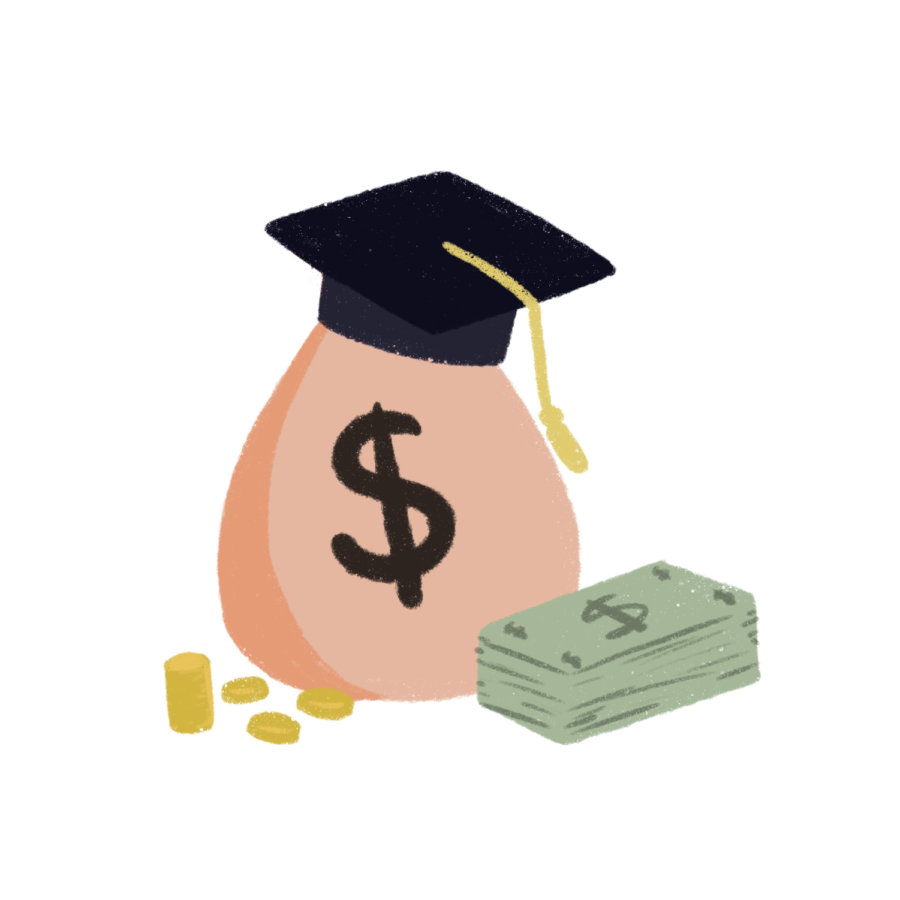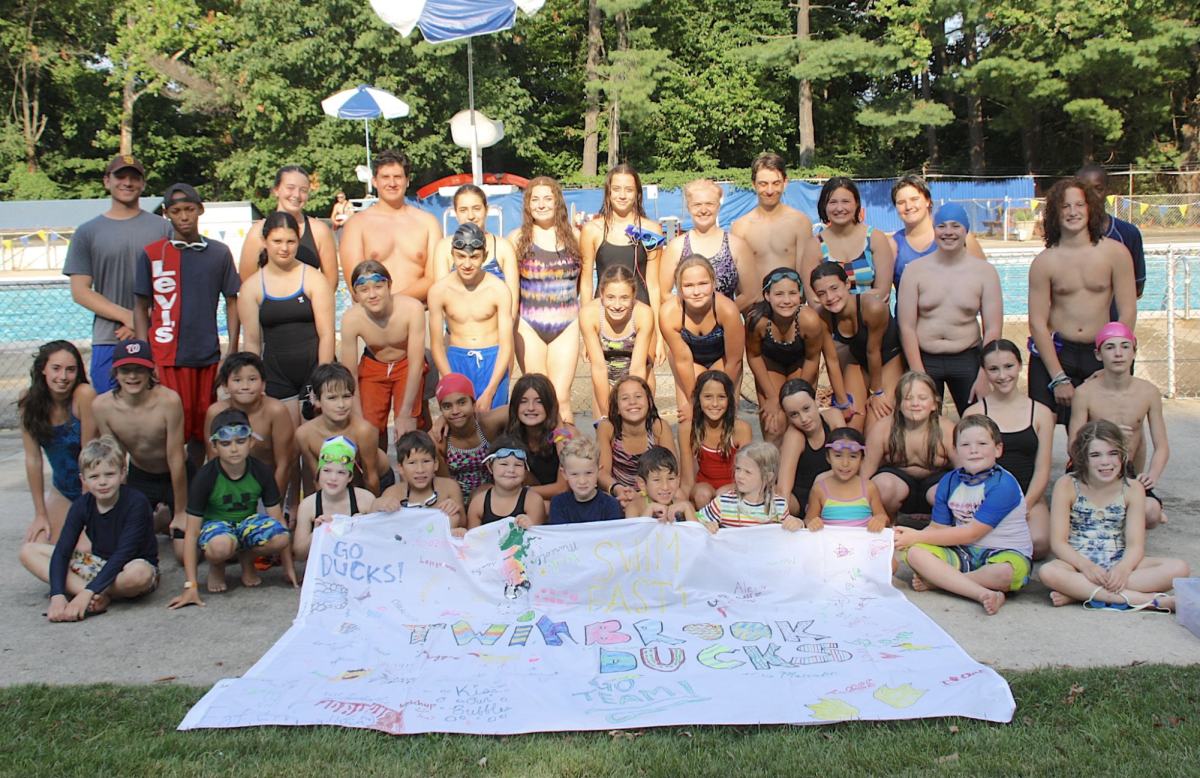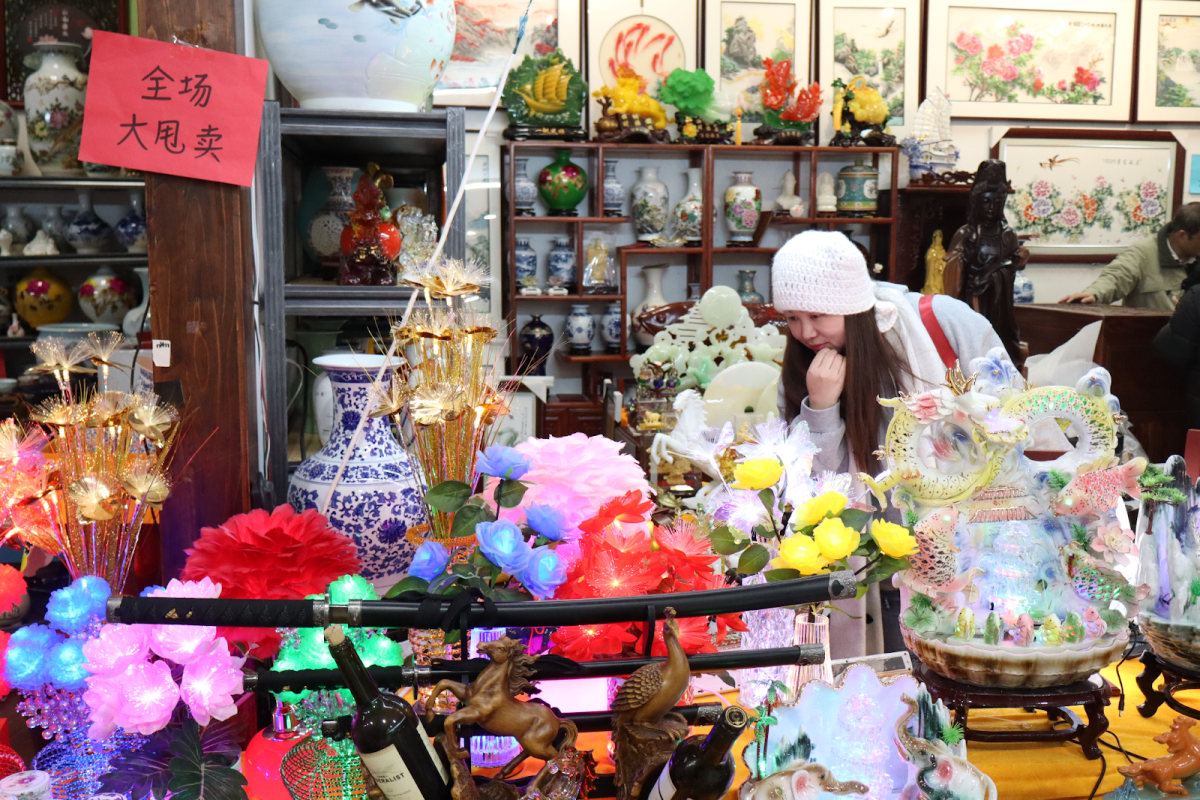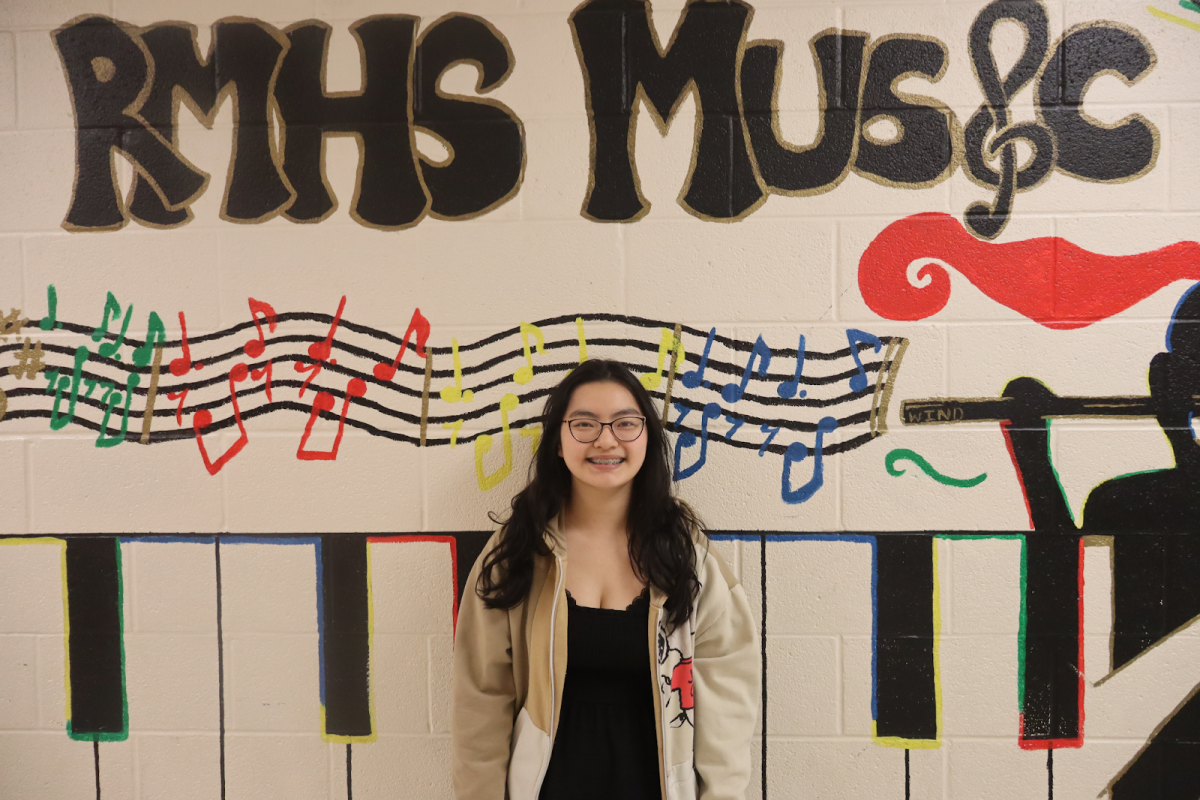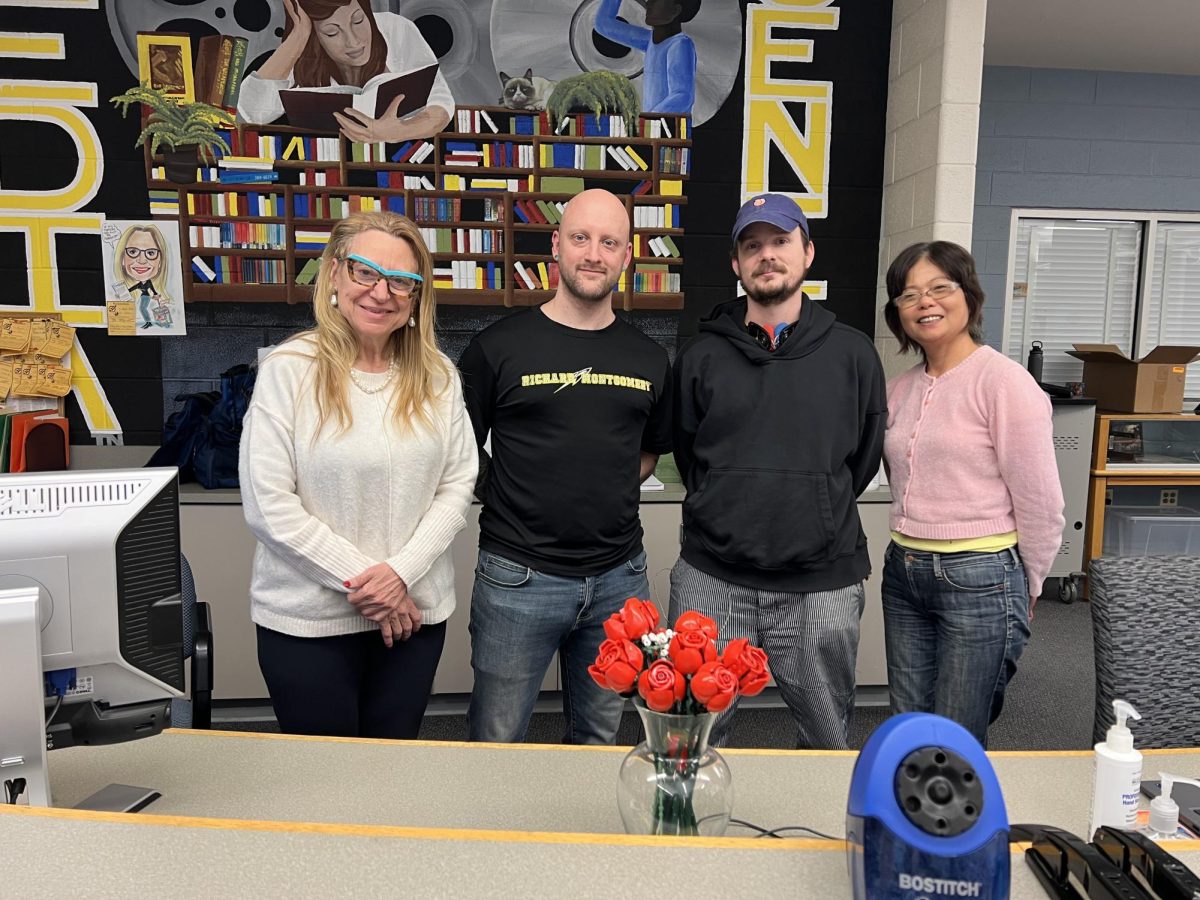On Tuesday, March 7, two cultures came together when RM welcomed a delegation from the Shanghai Chongming Board of Education in China. The delegation included the Chongming deputy superintendent, principals from Chongming high schools, middle schools and elementary schools and a Chongming high school teacher. The delegation was greeted by our spirited drumline and chants of “RMHS” and performances by the choir, orchestra and Poms team.
Prior to coming to RM during the lunch period, the delegation visited Montgomery College and College Gardens Elementary School and its Chinese immersion program. After having lunch in the art gallery, the delegation visited RM classrooms. They saw a variety of classes, including vocabulary lessons in Chinese class, Kahoot review games in IB Biology and printmaking in Drawing and Design.
The purpose of this meeting was to introduce the Chinese delegation to the RM area and continue discussing the establishment of a sister school program between RM and Yangtze High School in Chongming. Planning for this program began in the fall of 2015 when Mrs. Ruyan Teng and Mrs. Lily Qi scheduled a meeting with Principal Mr. Damon Monteleone. “It’s actually a really cool story—I looked at my calendar and I said, who are these people, Ruyan Teng and Lily Qi, that are coming for a meeting? What is this about?” Mr. Monteleone reflected. “So it wasn’t initially my idea, but I absolutely love the idea and have done everything I can to make it happen since it was brought to me.”
Teng is the founder of C&T Youth Technology Academy in Rockville, Md. and runs a program called Youth Building Bridges. “Every year, we organize American high school students to go to China and do training and to help a poor area of Chinese kids,” she explained. “We have a YBB Institute located in Yangtze High School, so that’s how I know the school.”
Given her connections in Chongming, Teng wanted to start a sister school program to give back to RM, Montgomery County and her hometown, Shanghai. “My son graduated from RM and he loved the school, so as a mother, I wanted to do something for the school he loved,” she explained. “I’m happy to build a bridge and do something for both Montgomery County, the place I’m living in and feel at home, and also the city where I grew up.” Qi, who has a son who graduated from RM, also hoped to give back to her community.
In September of 2016, Teng, Qi, and Mr. Monteleone visited Chongming to discuss the idea with the Chongming Board of Education and tour the Chongming area. “Qi, the chief economic advisor to Ike Leggett, went on behalf of the Montgomery County government to try to establish some business partnerships,” Mr. Monteleone explained. “I went as a representative of RM but also of MCPS. Teng was there on behalf of her non-profit.”
After establishing a commitment of intent and common goals, plans to hold an exchange were set in motion. “The next step would be to have [the Chinese] come here with students and staff next January during the Lunar New Year,” Mr. Monteleone said. “The Chinese students would be paired with an RM student and stay with a host family. They would go through a week of classes and then perhaps have an excursion to DC or a weekend trip to New York or Philadelphia.” During spring break of 2018, a similar exchange would occur, with RM students and staff visiting Yangtze High School in China.
Both parties agree that the sister school program would foster better mutual understanding between the two countries. “The program is a great starting point towards globalization,” Shungao Lu, Principal of Yangtze High School, said. “Our Chinese students will be able to leave China and gain a better understanding of the world, and students of the world will be able to visit China and gain a better understanding of Chinese culture.”
For Lu, part of this cultural exchange includes an exchange of classes. “Students visiting is short-term, but if we want to establish a long-term partnership, we can implement some Chinese culture classes in the US and help students gain a better understanding of Chinese society, history, and culture,” he explained.
The cultural exchange is also a learning experience for both school districts. “We can emulate the positive characteristics of America and fix our own weaknesses,” Naihua Huang, the Deputy Director of the Shanghai Chongming Education Bureau, said.
Both sides hope to include teachers, not just students, in these cultural exchanges. “[The Chinese] would love for our teachers to go there and do seminars with their teachers, and share how they plan, collaborate and have kids do projects or online lessons,” Mr. Monteleone explained. “I hope that there would be a pedagogical exchange of ideas. We have a lot to learn.”
Through their visits to the other country’s schools, both sides have already noticed differences in teaching style and found characteristics they would like to emulate. “I think we have a lot to learn from the way the Chinese schools that I visited integrate technology,” Mr. Monteleone said. “In their biology labs, every student’s desk has a high-powered microscope attached to a computer with a screen. The teacher sits behind a console with a Promethean board behind them, and they can see what every single one of their students has on their screen and choose to project student screens to the class.”
During his visit to China, Mr. Monteleone also noticed a discrepancy between these high-tech labs and more traditional classrooms. “Kids would go from a class with that level of technology and in the next class they would be sitting in rows. They would have an old-fashioned ink set of calligraphy and they would be practicing their characters,” he said. “I think this is actually an indicator or emblematic of this amazing place that China is. It is simultaneously rooted in tradition and culture and antiquity, but at the same time it’s cutting-edge of the future.”
On the other hand, the Chinese delegation observed that the American teaching method placed greater emphasis on the process of learning a concept, while the Chinese teaching method focused more on the results. “Today we watched a multiplication lesson. In China, we teach our students to recite multiplication formulas, with emphasis on speed and results,” Yongxin Chen, Deputy Chief of the Department of Fundamental Education, explained. “However, in America, they place greater emphasis on the process. Although it is slower, the students understand why it works.”
The Chinese delegation also commended American teachers’ ability to engage the students. “The teachers encourage and compliment the students more and there are more interactive activities and small group activities,” Lingli Huang, a physics teacher at Yangtze High School, said.
Eventually, both parties hope to expand the sister school and cultural exchange program to other MCPS and Chongming schools. “We’re building a model, a small model, and then hoping to bring people in as it grows,” Mr. Monteleone said.
Ultimately, through this cultural exchange, both parties hope to forge bridges between two cultures, societies, and teaching methods. “I have grown and become the person I am because of the places that I have traveled to and where I’ve lived,” Mr. Monteleone said. “I feel like, specifically for many Americans, we tend not to see outside of our own national borders, so my ultimate goal is to be able to bring that same level of experiences and opportunity to our students here and the Chinese students there so they can really broaden their horizons and experiences.”








